Playing games is fun. From Monopoly to Monument Valley, we keep going back for more because games are engaging – our brain craves it because we’re hard-wired for it. Every time you roll a dice or climb a ladder to complete another level, your brain’s reward center lights up.
And this is why gamification is so powerful.
Gamification is the use of game design mechanics in non-gaming situations. By adding elements like points, levels and progress bars to non-game contexts like membership sites, you can recreate the gaming experience – and improve engagement, boost brand awareness, and generally make your content more enjoyable.
There are lots of different ways you can gamify your membership site, but all involved some careful thought and planning in order for your efforts to be effective and successful for your members.
So in this post, we’ll explore what gamification is and how it works, the things you should keep in mind when adding it to your site and tools to help you do it, as well as plenty of examples to get you inspired.
What is Gamification?
Gamification has exploded in recent years, so much so that it’s now everywhere.
But there’s one point worth clearing up before we go: gamification doesn’t necessarily mean playing games. Gamification is a broader concept that’s about content engagement.
Whether you’re trying to stay fit, learn a new (programming) language or even just spend 2 minutes meditating, there’s an app or service to help you do it – and it probably incorporates elements of gamification.
While gamification might be considered a fairly newish buzzword, it’s actually been around for a while.
The term was originally coined by computer programmer and inventor Nick Pelling back in 2002. But it wasn’t until 2010 when the term really caught on – it started to gain traction after Gartner predicted that more and more companies would start gamifying processes to better appeal to consumers and increase customer retention.
There are lots of different gamification techniques, from points and leaderboards to quizzes and challenges. But one of the most common and popular forms of gamification on websites is profile badges, as made popular by sites like Foursquare and Codecademy.
Codecademy, an e-learning platform that provides coding classes, offers badges, points and streaks as part of its system of rewards. There are four types of badges: exercise badges (when a specific number of exercises has been completed), course badges (when a learner completes a lesson that doesn’t have a specific badge), course-specific badges (these are special badges that apply to some courses), and promotion badges (these are for Codecademy promotions and events).
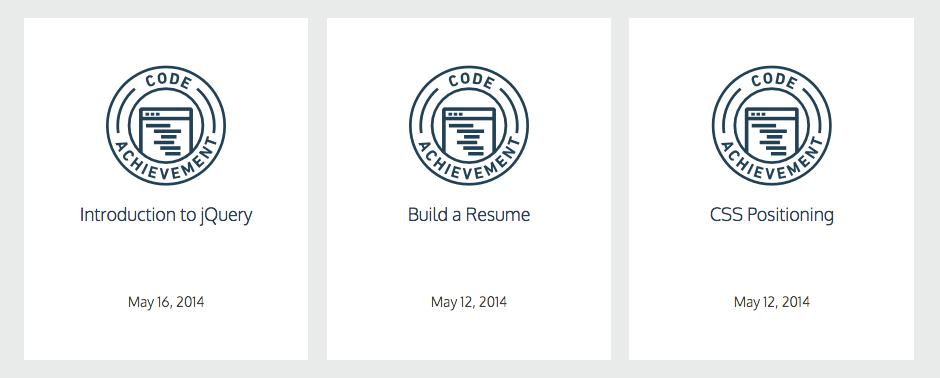
Some of my own Codecademy badges. It’s been a while – time to start brushing up on my skills again!
For a more in-depth exploration of gamification, check out Gabe Zichermann’s talk Gamification – The New Loyalty from the 2011 Copenhagen Social Media Conference.
Likewise, Jane McGonigal talks about how gaming elements can help solve real-world problems in her TED talk Gaming Can Make a Better World.
How Gamification Works: Your Brain On Games
Games work because of dopamine, a neurotransmitter that helps control the brain’s reward and pleasure centers. Dopamine also helps regulate movement and emotional responses, and it enables us not only to see rewards, but to take action to move toward them.
Basically, it’s a feel-good drug for your brain.
There’s also a specific part of your brain that helps you decide if your actions are good or bad, and if it’s good, you get a little boost of dopamine. This reward pathway in your brain plays an integral role in how we learn through positive reinforcement.
According to the Icahn School of Medicine at Mount Sinai, the activation of the pathway “tells the individual to repeat what it just did to get that reward.” It also tells the memory centers in the brain to pay particular attention to all features of that rewarding experience so it can be repeated in the future.
So basically, what this means is that when you do something well, your brain gets a reward (a dopamine hit) and you want to do it again.
No wonder it feels good when you win, right? But it can be challenging to stay on track and keep motivated when you’re doing something for an extended period of time, i.e. being part of a membership site. Fortunately, gamification can help provide the small boosts of motivation your members need along the way.
When you gamify a membership site, it provides a way to:
- Help guide members’ behavior and move them from A-Z through your membership
- Motivate members to complete content
- Improve member engagement and enjoyment of your site
- Reward members for desired behaviors and actions
- Increase member retention and keep members coming back for more
Above all else, gamification is designed to encourage members to get into the habit of using your site and returning to complete tasks. After all, they need their dopamine hits!
Adding Gamification to Your Membership Site
The best gamification takes advantage of what Nir Eyal, author of Hooked: How to Build Habit-Forming Products, calls the “hook model”. A hook has four parts:
- A user first see a visual cue (1) that triggers a habit, or else has an internal urge;
- This instigates a habitual action (2) that the user thinks will satisfy their goal;
- On completing the action, the user receives their reward (3), the reason why they acted in the first place;
- The entire model is reinforced (4) so the user wants to do it again.
Eyal explains how it all works here:
Before you go applying these principles and gamification techniques to your membership site, there are 5 key things to keep in mind.
Make it relevant
Any gamification you add to your membership site should be relevant and make sense in the context of the product or service you are providing. While you might like the idea of having a leaderboard and encouraging members to compete for points, it’s not going to work if, say, you run an online community for people trying to lose weight. For this type of site, you would want to provide support to people rather than push them to compete.
However, if your membership site is for running enthusiasts, a leaderboard would be perfect – you could encourage members to log how far they’ve run each week and compete for points and badges.
Your site’s gamification needs to fit your members’ goals. If it doesn’t integrate seamlessly with the topic of your site, then it’s not going to motivate and engage your members in the long term.
Take Runkeeper, for example. The fitness app encourages users to run, walk, hike or do any other physical activity. It records all kinds of data, like time, distance and pace. But where gamification comes into play is how the app lets you set goals and achieve badges.
Whether you’re working towards completing a 5km fun run or training for a marathon, the app can help you stay motivated with goals and challenge. When you complete certain activities, like running your fastest 10km, you win badges that you can then share with friends on social media.
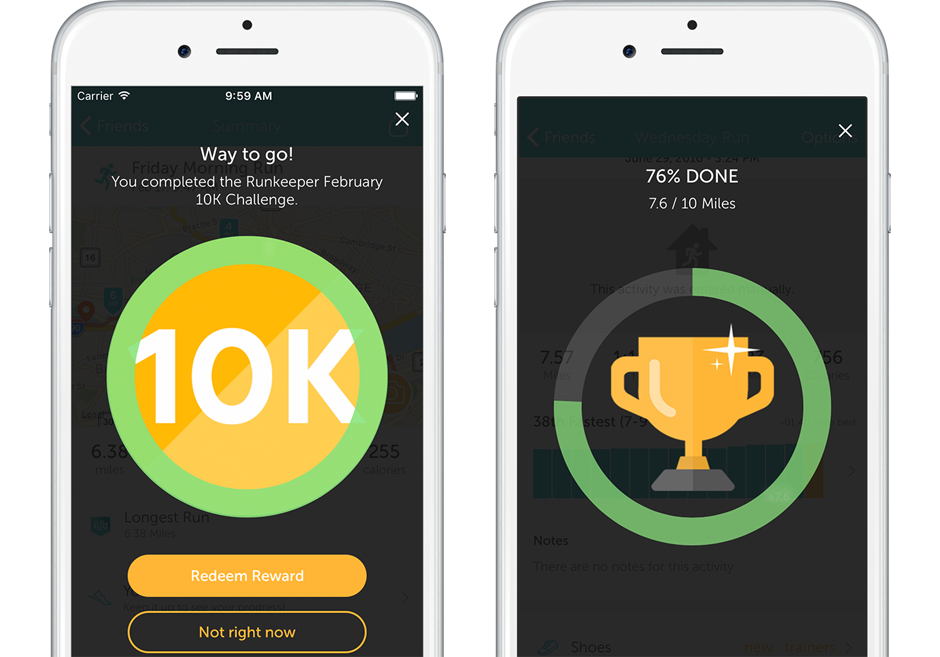
Runkeeker’s gamified badge system is highly motivating. Who doesn’t love a trophy!
It’s hugely motivating. I mean, who doesn’t like seeing a shiny trophy after running 10km! Not only does it make you feel like you’ve accomplished something, but it makes you want to run again – and use Runkeeper to track it.
Make it easy
If members struggle to understand how your gamification works, then Houston, we have a problem.
Make it easy for members to get started with your gamification and to quickly get how it works. If you need documentation or even a video to explain it, then it’s way too complicated and will confuse users and disrupt the flow of user experience.
The best way to introduce your gamification to members is during onboarding. For example, if you use badges you might award a “new member” badge when someone completes sign up and logs in for the first time. This will quickly get them used to the idea that there are steps to complete and badges to be won. Don’t forget to provide a link somewhere on your member dashboard that explains how your badges work and how members can achieve them.
How do you gamify a to-do list? Using karma, if you’re Todoist. The app provides a simplified interface that encourages users to fill in their ongoing tasks and then check them off upon completion. But what Todoist does a bit differently, however, is provide goal visualization. Rather than just display a message saying “nice work!” whenever a member completes a task, Todoist offers “Karma” rewards based on how productive users are.
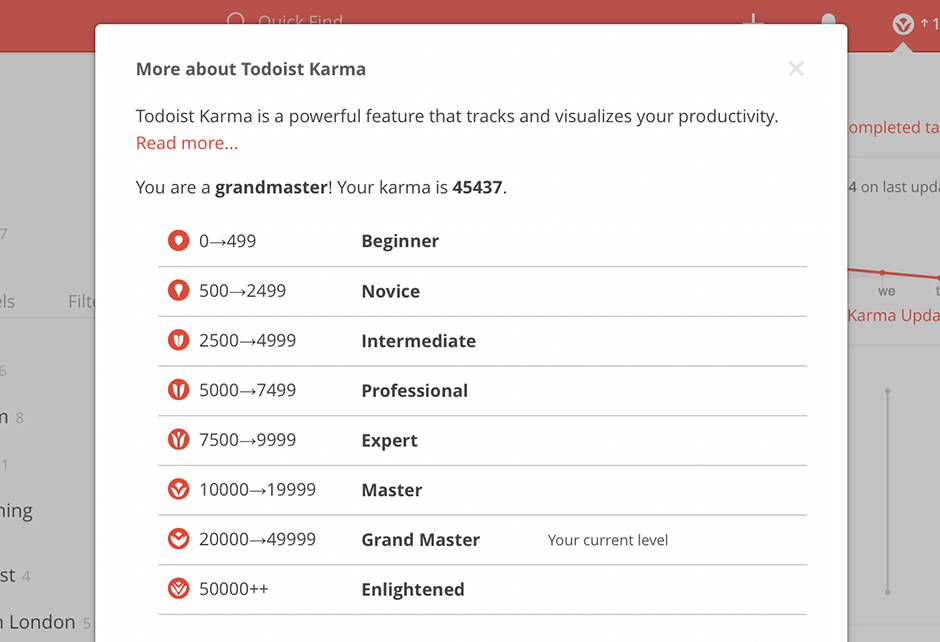
Every time you check off a task, feel good with Karma points.
The more points you earn, the higher your Karma level rises. Users can earn points when they add tasks, complete tasks on time, use advanced features like labels and reminders, reach goals and achieve ongoing streaks. You lose Karma when you have tasks that are 4 or more days overdue.
It seems so simple, but for users who love checking off tasks, Karma is a powerful feature that keeps users engaged and coming back for more.
Make it challenging
Did I say make your gamification easy? Yeah, you need to make it challenging, too. Yes, it might seem like a contraction, but your gamification needs to strike a balance – it needs to be easy enough for members to understand and start using right away, but also challenging enough that when they achieve a badge they feel a sense of accomplishment. Otherwise, if it’s too easy, they will get bored and lose interest.
Remember how I mentioned onboarding members and awarding them a “new member” badge in the last section? After onboarding, you could gradually increase the challenge involved in your gamification.
Going back to the Todoist example above, in particular the image, you can see how the app ranks Beginners from 0-499, but you have to earn another 2000 points to become a Novice. Again, to go from Expert to Master, it’s a jump of 10,000 points. It’s a big jump in points, but also presents a challenge that encourages users to keep checking off tasks towards reaching their goal.
Similarly, if Todoist made it too easy to advance from level to level, the shine would wear off quickly and users would quickly lose any feeling of achievement
Make it beneficial
Gamification needs to have a purpose. If your members feel like you’ve gamified your site for the sake of it, it simply won’t work.
So how do you make it beneficial? There are two things you need to consider:
- What motivates your members. What do they want to achieve by being part of your membership site?
- What kinds of behaviors and actions do you want to encourage?
Once you’ve worked out these these, you can plan a gamification system for your site they will not only motivate and encourage them to participate in your community, but also entertain and help them towards achieving their goals.
Show users their progress
Show your members how far they’ve come – literally. Using visuals like a progress bar, statistics or points will help reinforce their reinvestment in your site and strengthen the hook model.
LinkedIn is a classic example of this. When you log in and visit your profile, the networking site displays a progress bar reminding you to enter information about your education and working experience that you have neglected to add to your profile.
This simple progress bar triggers your need for completion and to reach that star at the end of the progress bar. It’s a simple tactic, but one that’s especially powerful when it comes to onboarding members and guiding them through completing tasks.
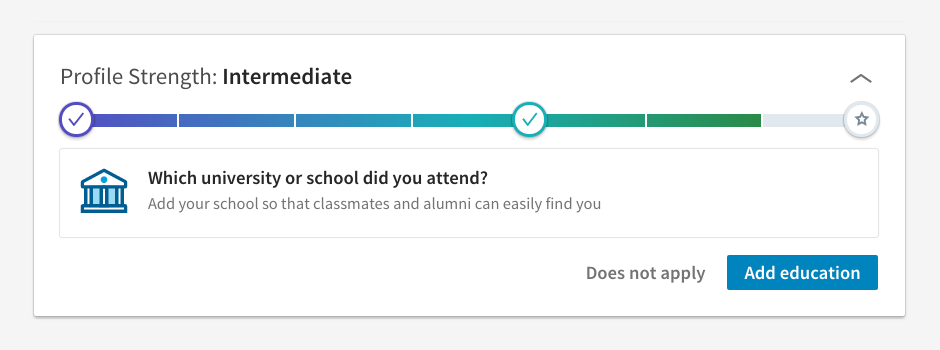
LinkedIn displays a progress bar on your profile to encourage you to fill in more personal information.
Tools for Gamifying Your Site
Once you’ve decided how you want to gamify your site, the next step is actually gamifying it. Fortunately, there are lots of fantastic tools to help you do it.
BadgeOS
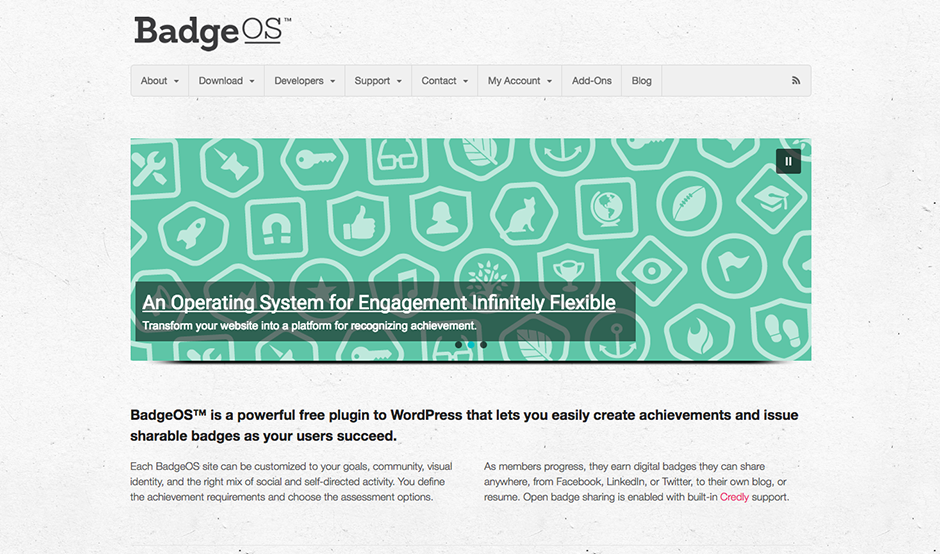
BadgeOS is a powerful free plugin that lets you easily create achievements and award shareable badges to your members. You can even customize how you use the plugin to suit your site’s goals and community.
WPAchievements
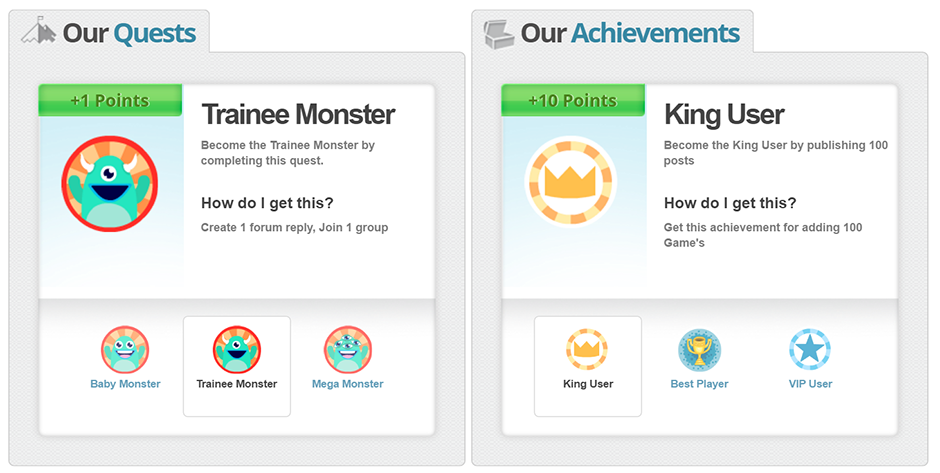
WPAchievements is a similar solution that you can add to a new or existing WordPress site. It works by providing an interface where you can set up achievements for your members, assign badges (and even create your own).
Captain Up
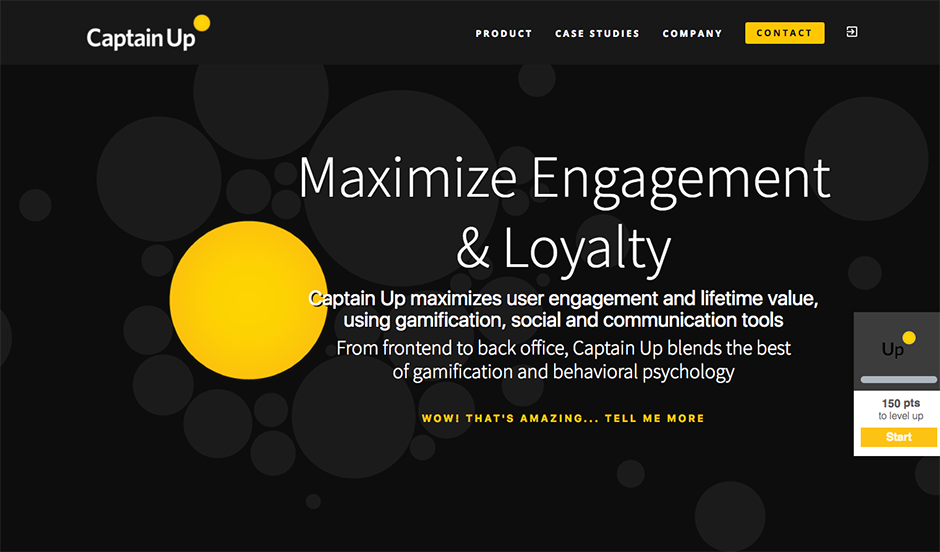
Captain Up is a fully fledged gamification platform that you can integrate with your site and provide all kinds of fun interactive elements to your members, like levels, trophies, points, and even virtual currency. It also has features for displaying leaderboards and checking real-time member data with analytics.
Conclusion
Gamification provides a fun and powerful brain-satiating way to keep members engaged. Not only does gamification entertain members and help them feel a sense of achievement when they use your site, but it also works on the principles of habit formation so members return to your site again and again.
Hopefully you’re now armed with all the knowledge you need to gamify your membership site. Don’t forget to plan – the successful gamification of any membership site requires careful planning and consideration of your members’ motivations and goals in order for your efforts to be successful in the long term.
Oh, and by the way, you’ve just earned 100 brownie points for reading this post!
Read other posts about:
Leave a Reply
Discover your innate talents and embrace them as the foundation to personal and business success. Walk away with personalized tips to help you overcome the mental hurdles unique to your brand builder personality.
What’s your brand builder personality?
Take the quiz
Leave one here
Comments